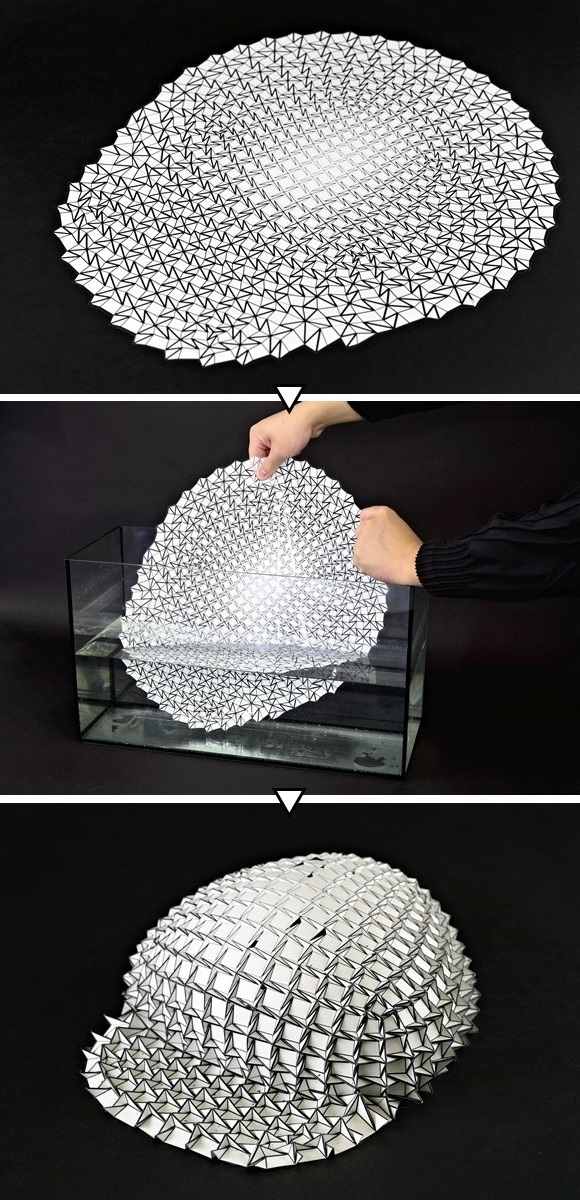
A polyhedral cap with 3,426 faces
14:59 JST, August 9, 2023
A research team led by the University of Tokyo has developed a self-folding technique to quickly and easily form complex three-dimensional shapes with heat. The technology is expected to be applied in a wide range of industries.
The process involves printing a pattern on a heat-shrink sheet, which forms a shape according to the diagram when heated.
A paper about the technology has been published in an international scientific journal.
Theoretically, any polyhedron can be made from a single sheet in origami. Because items can be easily transported or stored when unfolded, research is underway to utilize this idea in such fields as medicine and space development.
The team created a design for a 3D object with computational software, printed it on the sheet and immersed it in hot water of 70 C or higher. The inked areas on the sheet do not shrink, so the ink does not tint the parts that are folded. The fold angle can be adjusted by changing the width of the crease by as tiny as 0.1 millimeter.
A technique for folding a 3D object without human intervention using only the force of material transformation is called self-folding, but the number of folds and faces created has so far been limited to around 100.
The team focused on a feature of UV printers — which solidify ink with ultraviolet light — that means they can print at a higher resolution than conventional printers and can create a polyhedron with a maximum of about 130,000 folds and 90,000 faces.
“In addition to designing clothes and furniture, this technology can also be used for the transformation of objects in space, which is difficult to do by hand,” said Koya Narumi, a specially appointed lecturer in design engineering at the University of Tokyo. “We want to propose a new form of manufacturing.”
Tsukuba University Prof. Jun Mitani, who has been researching 3D origami, said: “This is groundbreaking, and it will make it possible to develop products that used to be difficult to model in 3D. A variety of applications can be expected depending on ideas.”
"Science & Nature" POPULAR ARTICLE
-

Mass Oyster Die-Offs Confirmed in Japan’s Seto Inland Sea; High Water Temperature Cited as Primary Cause
-

Genome Study Reveals Milestone in History of Cat Domestication
-

Big Leap in Quest to Get to Bottom of Climate Ice Mystery
-

Security Camera Footage Vulnerable to Outside Access; Investigation Finds 3,000 Pieces Exposed Online
-

Star-eating Black Hole Unleashes Record-setting Energetic Flare
JN ACCESS RANKING
-

Japan’s Hopes for Seafood Exports Shot Down in China Spat
-

Keidanren Chairman Yoshinobu Tsutsui Visits Kashiwazaki-Kariwa Nuclear Power Plant; Inspects New Emergency Safety System
-

Japan to Charge Foreigners More for Residence Permits, Looking to Align with Western Countries
-

Japan Exports Rise in October as Slump in U.S. Sales Eases
-

Govt Aims to Expand NISA Program Lineup, Abolish Age Restriction
























